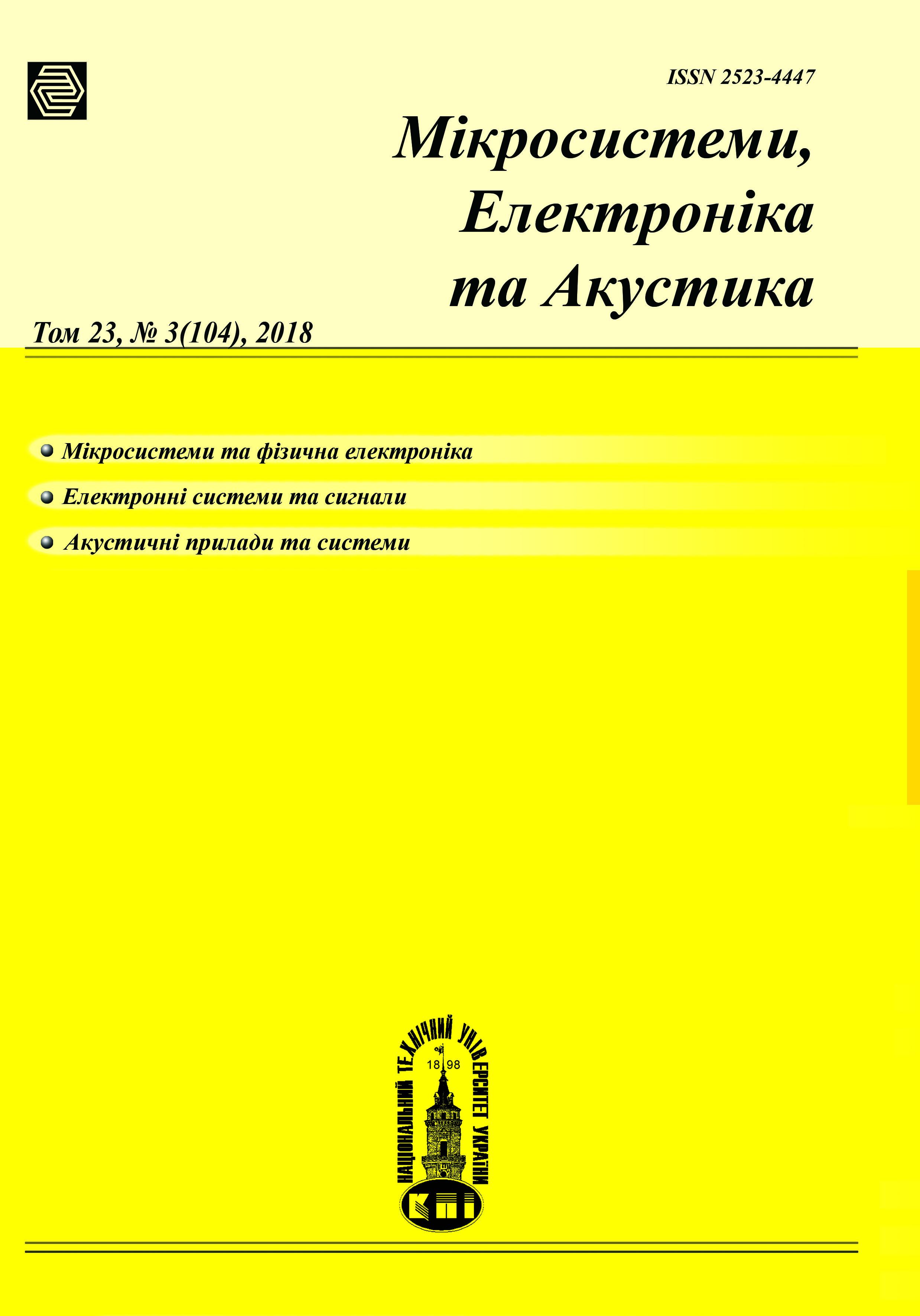Optimal linear control of the output voltage of a grid-connected single-phase photovoltaic power source
Main Article Content
Abstract
The object of the study is an autonomous source of sinusoidal voltage, which consists of a bridge frequency converter with PWM, equipped with an output LC filter and a single-phase nonlinear output transformer with an additional output filter, which is connected to the non-autonomous grid. The nonlinearity of the magnetic system of the transformer is approximated by an odd function of the arctg type. The substitution of variables made possible to develop a mathematical description of the circuit in the form of a nonlinear singularly perturbed system of differential equations. It is assumed that there is an attractive invariant surface, which makes it possible to reduce the order of the original system of equations. An analytical form of the equations of this surface in the form of a series in powers of a small parameter is obtained. A system of lower-order differential equations is obtained that is equivalent in some region to the original nonlinear singularly perturbed system. The non-linear reduced system is transformed to a form that has made it possible to apply the linear feedback control strategies. The Lyapunov function is obtained as a quadratic form, the coefficients of which are solutions of the matrix algebraic Riccati equation. A condition is set out in which the use of these coefficients guarantees the local asymptotic stability of this nonlinear system. The results of digital simulation are presented. The simulation was performed taking into account the limitations inherent in the real object of power electronics and affecting the possibility of technical implementation of the obtained control strategy. Local equivalency and isomorphism in the control strategies of full-length and reduced systems avoids the need to measure all variables in the space of states, which facilitates practical implementation. The possibility of reducing the impact of load jumps on the form of the output voltage has been checked, taking into account the constraints specific to real systems, has been verified using digital simulation.
Ref. 11, fig. 2.
Article Details

This work is licensed under a Creative Commons Attribution 4.0 International License.
Authors who publish with this journal agree to the following terms:- Authors retain copyright and grant the journal right of first publication with the work simultaneously licensed under a Creative Commons Attribution License that allows others to share the work with an acknowledgement of the work's authorship and initial publication in this journal.
- Authors are able to enter into separate, additional contractual arrangements for the non-exclusive distribution of the journal's published version of the work (e.g., post it to an institutional repository or publish it in a book), with an acknowledgement of its initial publication in this journal.
- Authors are permitted and encouraged to post their work online (e.g., in institutional repositories or on their website) prior to and during the submission process, as it can lead to productive exchanges, as well as earlier and greater citation of published work (See The Effect of Open Access).
References
C. V. Nayar, S. M. Islam, H. Dehbonei, K. Tan, H. Sharma, “Power Electronics for Renewable Energy Sources,” Power Electronics Handbook Devices, Circuits, And Applications. Third Edition, pp. 723-764, 2011, ISBN 978-0-12-382036-5.
R. Teodorescu, M. Liserre, P. Rodriguez, Grid Converters for Photovoltaic and Wind Power Systems. Hoboken, NJ, USA: John Wiley & Sons Ltd, 2011, E-PDF ISBN: 9780470667040.
Sivasankari Sundaram, K. N. Sheeba, Jakka Sarat Chandra Babu, “Grid Connected Photovoltaic Systems: Challenges and Control Solutions - A Potential Review,” Int. Journal of Electronics and Electrical Eng, vol. 4, no. 6, pp.463-473, DOI: 10.18178/ijeee.4.6.
Yang Y., Blaabjerg F. “Overview of Single-Phase Grid-Connected Photovoltaic Systems,” Electric Power Components and Systems, pp. 1-10, 2015, DOI: 10.1080/15325008.2015.1031296.
Mikhal's'kiy V. M., Zasobi pídvishchennya yakostí yelektroyenergíí na vkhodí ta vikhodí peretvoryuvachív chastoti ta naprugi z shirotno-ímpul'snoyu modulyatsíêyu [Means for improving the quality of electricity at inputs and outputs of frequency and voltage transformers with, Kyiv: Ínstitut elektrodinamíki NAN Ukraíni, 2013. ISBN: 978-966-02-6727-5.
Matyuk V.F., Osipov A.A. “Matematicheskiye modeli krivoy namagnichivaniya i petel' magnitnogo gisterezisa. Chast' Í. Analiz modeley,” [Mathematical models of the magnetization curve and magnetic hysteresis loops. Part I Analysis of models. ] Nerazrushayushchiy kontrol' i diagnostika,no 2, pp.1-33, 2011.
Mysak T.V. “Pobudova konturu modulyatsiyi vykhidnoyi napruhy dzherela zhyvlennya z neliniynym vykhidnym transformatorom za dopomohoyu matematychnoyi modeli ponyzhenoho poryadku,” [Construction of the circuit of modulation of the output voltage of the power source with a nonlinear output transformer using a mathematical model of reduced order] Pr. In-tu elektrodynamiky NAN Ukrayiny, no 47, pp.57-67, 2017.
Voropayeva N.V., Sobolev V.A. Geometricheskaya dekompozitsiya singulyarno-vozmushchennykh system, [Geometric decomposition of singularly perturbed systems].- M.:Fizmatlit, 2009, ISBN 978-9221-1166-9.
Yolkin V.I., Reduktsiya nelineynykh upravlyayemykh sistem: Differentsial'no-geometricheskiy podkhod [Reduction of nonlinear control systems: Differential-geometric approach] - M. : Nauka, 1997, ÍSBN 5-02-015220-X.
Rafikov M., José M. Balthazar, Ângelo M. Tusset. An Optimal Linear Control Design for Nonlinear Systems . J. Braz. Soc. Mech. Sci. & Eng.. 2008, vol.30, n.4, pp.279-284. DOI: 10.1590/S1678-58782008000400002
Kibardin V.V., Kovaleva O.A., Yazev V.N., “Kriterii optimal'nogo upravleniya i LQR-optimizatsiya v elektroprivode,” [Criteria for optimal control and LQR optimization in the electric drive] Vestnik KrasGAU, no 12, pp.61-73, 2015, URL : https://elibrary.ru/item.asp?id=25054273





